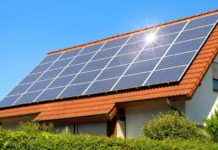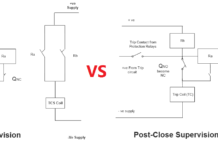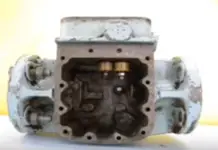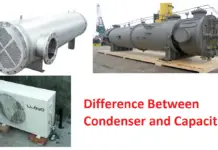Source of Electrical Energy:
It the world electrical energy will be taken from two kind of sources. One is conventional sources and another one is non-conventional sources. Conventional sources can be exhausted but non-conventional sources never get exhausted. Let see both conventional energy sources and non-conventional energy sources.
Conventional Sources:
- Water
- Coal
- Nuclear
- Diesel
- Gas
Non- Conventional Energy sources or renewable sources:
- Wind
- Solar
- Fuel cells
- Tidal
- Biogas
- Geothermal
Advantage of Non-Conventional Sources:
- No Operational Cost
- It does not affect environmental aspects. Pollution free
- It never exhausts.
Let see the electrical energy sources:
[wp_ad_camp_2]
Water:
The potential energy of water is converted into mechanical energy with the help of turbines. The mechanical energy is converted into electrical energy. Such operation stations are called hydroelectric power plants. Almost 16.6% of electricity demand will be managed by these hydropower plants. In this, the water is collected or stored in a dam or high elevation area. Then the same water will be passed through a small pipe to low elevations. These small pipe outlet water is arranged to fall on the turbine blades. Due to this, the turbine starts rotating. The same turbine is connected through an electric generator. generator starts producing electrical energy.
Advantage of Water sources:
- It does not require fuel
- Maintenance free
- Easy startups
- Pollution free
Coal:
Coal is a fossil fuel that forms when dead plant matter is converted into peat, which in turn is converted into lignite, then sub-bituminous coal, after that bituminous coal, and lastly anthracite. Coal is extracted from the earth. China is the top producer of coal. The power plant which generates electrical energy from the coal is called thermal power plant. The thermal power plants are burnt the coal with the help of boiler, and the boiler converts the water in to steam. The thermal power plant consists of boiler, steam drum, cooling towers, turbines, economizer, ESP etc.
Nuclear:
The generating plants, which uses nuclear energy are called nuclear power plants or Atomic power plants. Nuclear fusion and fission principle are used to generate power. Nuclear fission principles are widely used in such power plants. Nuclear fission means the energy from the splitting of the atomic fuel is released in the form of heat in the reactor. Mostly uranium, thorium and plutonium are used as a fuel for these plants. 1 kg of uranium is fissioned. 25 X 10^9 kWHr of heat energy can be produced. During this process we get large amount of heat energy, here water will be passed through the reactor. The water is converted into stream. The steam rotates the turbines and the turbine is connected to the electric generator. Finally, we get elelectrical energy from the nuclear power plants. However, the energy from the atomic power is high, but at the same the risk also high.
Nuclear power’s share of global electricity production has fallen from 16.5% in 1997 to about 10% in 2017, in large part because the economics of nuclear power have become more difficult
Diesel:
[wp_ad_camp_1]
Diesel energy
Diesel is a one of the petroleum product. Primover of the generator will be connected to the diesel engine. Diesel engine converts the diesel in to mechanical energy. These energies will be converted in to electrical energy. Diesel generator are the alternative source for the electrical power system. Diesel power plants and gas turbine units are otherwise called as “spinning reserves” because they can be started instantly when other generating unit fails.
Gas:
In gas power, the natural gas is used as fuel in these power plants. High compressed fresh air and natural gases are fed into the combustion chamber and they produce high-temperature gases are produced. They pass to the gas turbine which turns the power. Some Natural gases that you are using for your home appliances ex. LPG.
Wind:
The wind energy is used to run the blades of turbine which is coupled with induction generator to produce electric energy. Wind mill requires high wind for a long period in the same direction.
Solar Power
The heat energy radiated by the sun can be focused over a small area by means of solar collectors. This heat can be used to raise steam. This steam rotates the turbine blades to give mechanical energy. The turbine is coupled to alternator to produce electrical energy.
Fuel cell:
Fuel cell is used to convert a chemical energy into electrical energy. It consists of two electrodes and thee electrodes are separated by electrolytes. Oxygen will be passes through one of the electrodes and hydrogen passes through another electrode, this electrochemically action produces electricity.
Tidal Power:
In this, the kinetic energy of the tide water is used to generate electrical energy. A small with large gates can be made across the mouth of the bay. The gates will be opened when the tide waves are rising and low head turbine rotates. The turbine is coupled with the electrical alternator. The electrical alternator produces power with the help of these turbine.
[wp_ad_camp_4]
Geo Thermal energy:
The heat inside of the earth is a large source of thermal energy, the water will be passed to the inside of the earth. Due to the earth high temperature, the water will be converted into steam. These steam is used to rotate a steam turbine. The turbine coverts steam energy into mechanical energy (mechanical rotation), then the turbine is coupled with electrical generator, these generator generates electrical energy.
Bio Mass Power:
The chemical energy will be obtained from the carbonaceous waste of natural activates (human and animals) and by product of timber industry, agricultural crops, raw materials from forest, wood and household waste. Bio gaze will be observed from these things and which is used for cooking, generating electricity, pumping etc. The power is generating from the biogas energy is called biogas power plants.









